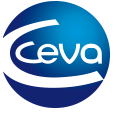 Pig production is in a period of transformation. Production costs have always been relevant, but it seems that pig holdings are in a particularly intense phase, given the increasing cost of energy and feed, and the ever-expanding ASF with its associated price for carcasses and piglets. Farms that want to position themselves well for the future must focus on sustainable solutions rather than short-term strategies.
Pig production is in a period of transformation. Production costs have always been relevant, but it seems that pig holdings are in a particularly intense phase, given the increasing cost of energy and feed, and the ever-expanding ASF with its associated price for carcasses and piglets. Farms that want to position themselves well for the future must focus on sustainable solutions rather than short-term strategies.
This also includes salmonella control. It is not only important to eliminate clinical diarrhea, which is often associated with salmonella, particularly after weaning and during nursery. It is also essential to prevent Salmonella from entering the food chain. Infected pigs are considered the major source of carcass contamination, especially when it comes to the monophasic variant of Salmonella Typhimurium.

Acids can suppress Salmonella shedding on short term, but as soon as they are used in lower concentrations or removed for cost reasons, the excretion rate increases again during stressors such as regrouping, sorting for slaughter and transport to slaughter. This can lead to contaminated carcasses and possible entry into the food chain.
In the long term, vaccination of gilts, sows and piglets effectively reduces the colonization with Salmonella, its excretion and thus the potential contamination of carcasses.
Ceva provides a calculator to compare the individual on farm treatment cost with acids for sows and pigs with the potential vaccination costs for the same target groups. The service is free and can be accessed through Acid vs Vaccination - Innovation in Salmonella Prevention (stop-salmonella.com)
Since Salmonella have a high tenacity and can contaminate the environment, in addition to the vaccination protocol, improvements in internal biosecurity and hygiene measures complete the control strategy and help to ensure success as quickly as possible.
January 22, 2022 - Ceva Santé Animal





